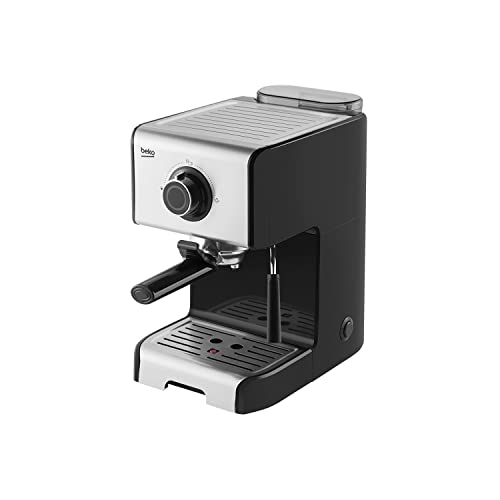How to Build a Professional Espresso Machine
For cafes and coffee shops that want to attract customers with a love of espresso and barista abilities, This is a great option. It's the official machine of the World Barista Championships and it really shows.
The barista can refill the reservoir of water throughout their shift. The machine also has steam wands that cool-touch as well as a hot water tap for tea.
Water
A commercial espresso machine must be able to create a huge amount of espresso based drinks in an efficient manner. They are typically made of stainless steel, which is strong and resistant against breaks and scratches. These espresso machines are also simpler to maintain and clean.
A high-quality machine must have an independent shut-off valve for the water pipe in order to prevent the accumulation of limescale. This will ensure any repairs are restricted to the affected parts of the machine and won't affect the rest of your operation.
Check your water and ensure it is treated properly. You can remineralize the water you distill by adding some minerals. This can diminish its anti-erosive properties as well as improve its taste, however it may also damage machines. The remineralized wate will make the boiler sensor think the machine is full, even though it isn't. This can lead to overheating and even damage to the machine.
Grinder
The grinder is an essential element of a successful espresso maker. It grinds a raw bean and transforms it into finely ground coffee that can then be put into the filter basket, resulting in an excellent extraction.
Commercial-grade professional espresso machines typically include a built-in grinder that can be programmed to grind various sizes of drinks, ensuring consistent results each time. Super-automatic machines go one step further and automatize the entire process from brewing through grinding and dispensing. These machines are often praised by Lab tests for their ease to use.
A manual or semi-automatic espresso machine requires more involvement from the barista, however the quality of the end result is often worth the effort. This model won the 2022 Good Housekeeping Coffee Award for its intelligent dosing system that weighs and dispenses the correct amount of ground coffee each time. It also has an infusion with low pressure for well-balanced extraction, as well as a milk frother that made dense, thick steamed milk during our tests.
Temperature
Temperature is a major element in espresso. If the water isn't operating at an ideal temperature, it can affect extraction and can cause bitter coffee.
Luckily, have a peek at this web-site come with tools that will allow you to keep your water at the right temperature. A PID monitors and regulates temperature of the water. Double boiler systems are a second method to accomplish this. This allows you to utilize one boiler for steam and tea while the second one heats water to brew temperatures.
Carles explains that these systems can be beneficial for large companies as well as baristas at home. They make it easier for newbies to determine the ideal shot of espresso because they are able to maintain an exact temperature and eliminate a lot of the variables that can throw off the flavor profile. It helps experienced baristas to create their espressos exactly how they would like them.
Pressure
The pressure the espresso machine makes use of also affects the quality of the coffee it produces. Many espresso drinkers have noticed that their drinks taste different based on the pressure they use, even if all other elements remain the same.
In general, most commercial-grade machines utilize nine bars of pressure to brew espresso. They also tend to be pump-driven rather than steam-driven. While higher-pressure machines exist they generally require a more complex group head design to manage the higher pressure levels.
While you may see some espresso machines advertising 15 or even 18 bars of pressure, nine bars is generally regarded as the most reliable standard for producing consistently excellent espressos. These higher-pressure machines are typically smaller and designed for home use.
In comparison, 9 bar of pressure is four times greater than the pressure applied by your car tire. The greater the pressure that a professional espresso machine can exert to the coffee, the better it will be at capturing the flavor of your favorite coffee beans. For this reason, it's worthwhile to invest in a top-quality machine that will give you the best possible results.

Barista Skills
A barista must be able to take orders and handle them quickly and precisely. This is especially crucial in busy times at the coffee shop. Good customer service skills are essential for building relationships with customers and boosting sales for the coffee shop. This includes acknowledging regular customers, working effectively to resolve issues, and staying positive and friendly even in the most difficult of situations.
Baristas often need to be able to multitask, as they are expected to take orders as well as operate a cash register, communicate orders with coworkers and handle phone calls all at once. This skill allows the customer to enjoy a pleasant experience in the cafe by ensuring that orders get delivered promptly.
It is important for baristas to know the various kinds of drinks that can be made using an espresso machine. You can find out about the various kinds of espresso by studying them, trying them in person and watching online videos. Many baristas find it helpful to attend classes offered by various organizations.
